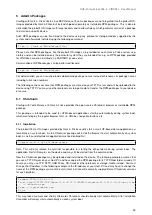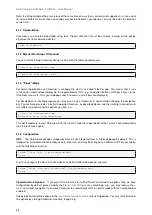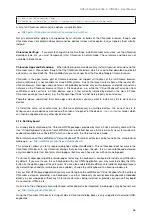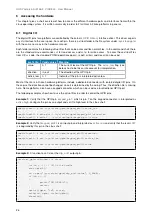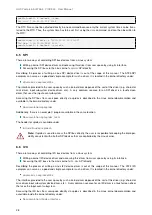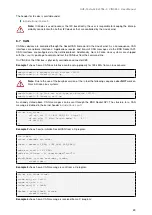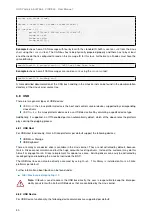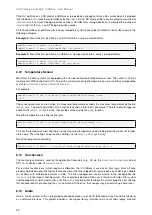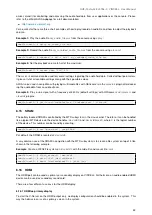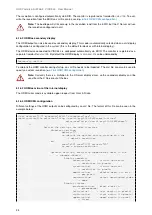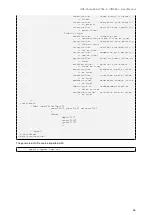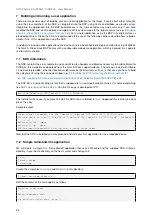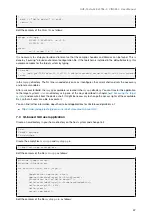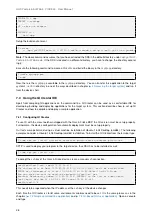
GUF-Yocto-34.0-r5756-0
VINCELL
User Manual
5
Add-On Packages
Starting with Garz & Fricke Yocto Linux BSP Release 19 some packages are not integrated into the prebuilt OS-
images provided by Garz & Fricke but instead shipped separately as installable RPM-packages. This is done to
not burden the prebuilt OS-images with larger packets and to allow choices, which particular version of a package
to install on a specific device.
Such RPM packages can be transfered to the device using any protocol or storage-medium supported by the
system and afterwards installed using the following command:
$ rpm -i
<name of RPM-package-file>
Please note that RPM-packages, like the prebuilt OS-images, are provided for each Garz & Fricke system sep-
arately and can be installed on only the particular system they are intended for, e.g. an RPM-package provided
for VINCELL cannot be installed on a SANTARO or vice versa.
Deinstallation of RPM-packages can be performed likewise:
$ rpm -e
<name of RPM-package>
For deinstallation you can usually provide abbreviated package names instead of filenames or package names
including full version numbers.
The following sections assume that RPM-packages are stored on your TFTP-server and will be uploaded to the
device using TFTP. You may use other protocols or storage-media to transfer the RPM-packages to your device,
of course.
5.1
Chromium
Starting with Yocto Release 19 Garz & Fricke provides the open-source Chromium browser as installable RPM-
package.
This package is intended to be used for HTML-based applications starting automatically during system boot,
which won’t display the regular browser GUI, i.e. URL-bar, navigation buttons, etc.
5.1.1 Installation
The prebuilt Yocto OS-images provided by Garz & Fricke usually start a small QT-based demo-application au-
tomatically on system boot. As the Chromium package will install the browser to start automatically on system
boot, as well, our default demo application must be disabled first:
$ update-rc.d -f qt4-guf-demo remove
Note: This will only remove the symlinks responsible for starting the qt4-guf-demo during system boot. The
application itself still remains on the device and may still be started from the command-line.
Now the Chromium package may be uploaded and installed on the device. The following example assumes that
you use a TFTP-Server on your Host-PC and have copied the RPM-package to its TFTP-Root folder, already. Of
course you may use FTP, SFTP, USB-Sticks, SD-Cards or other protocols or storage-media instead. You must
change the IP-address in the following example to the IP-address of your Host-PC and may have to change the
name of the RPM-package you want to install (Garz & Fricke will eventually supply different Chromium versions
for each platform).
$ export TFTP=172.20.9.107
$ curl tftp://$TFTP/GUF-Yocto-34.0-r5756-0-VINCELL-chromium-42.0.2311.90-r0.rpm >/tmp
,!
/chromium.rpm
$ rpm -i /tmp/chromium.rpm
$ sync
This may take a moment and shortly afterwards Chromium should already start automatically. After installation
Chromium will always start automatically on each system boot.
23















